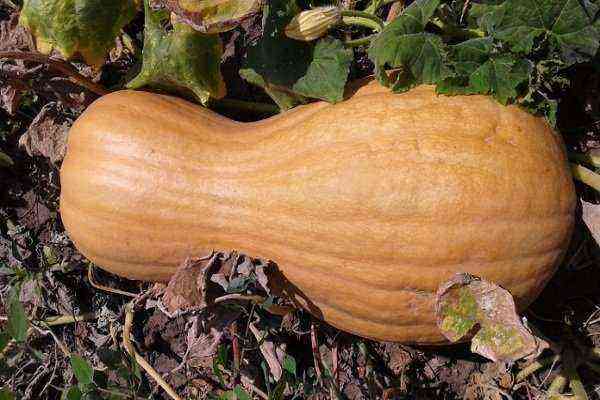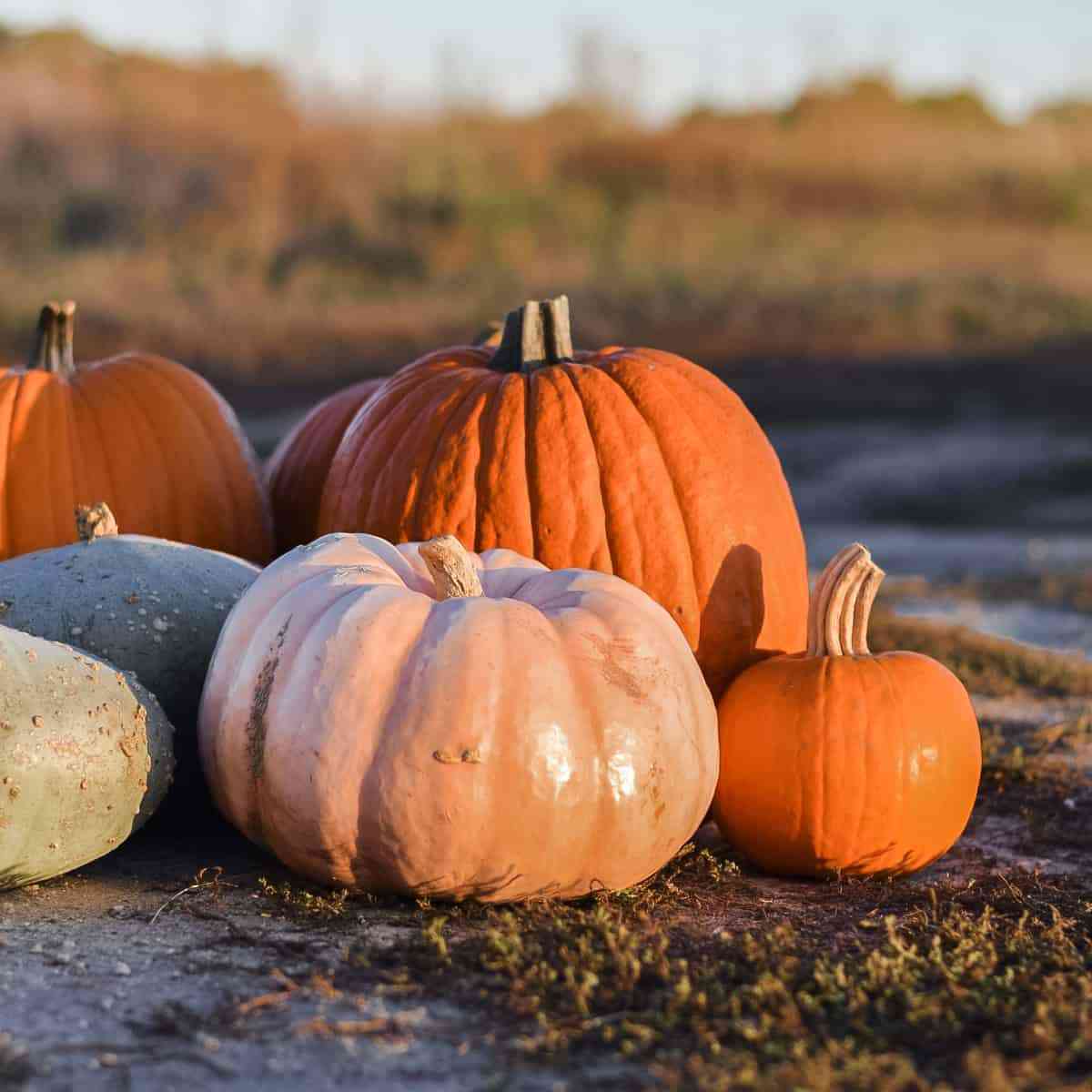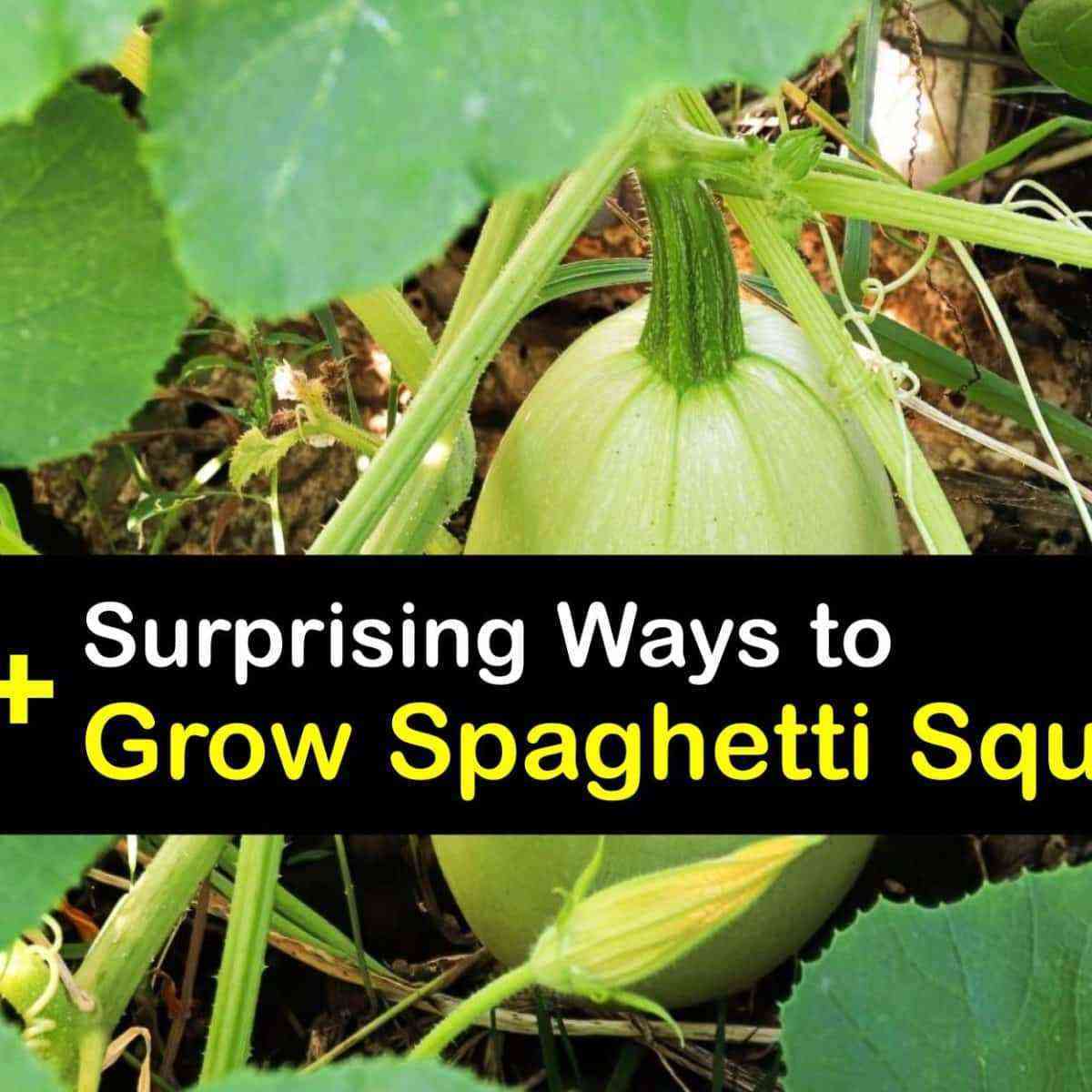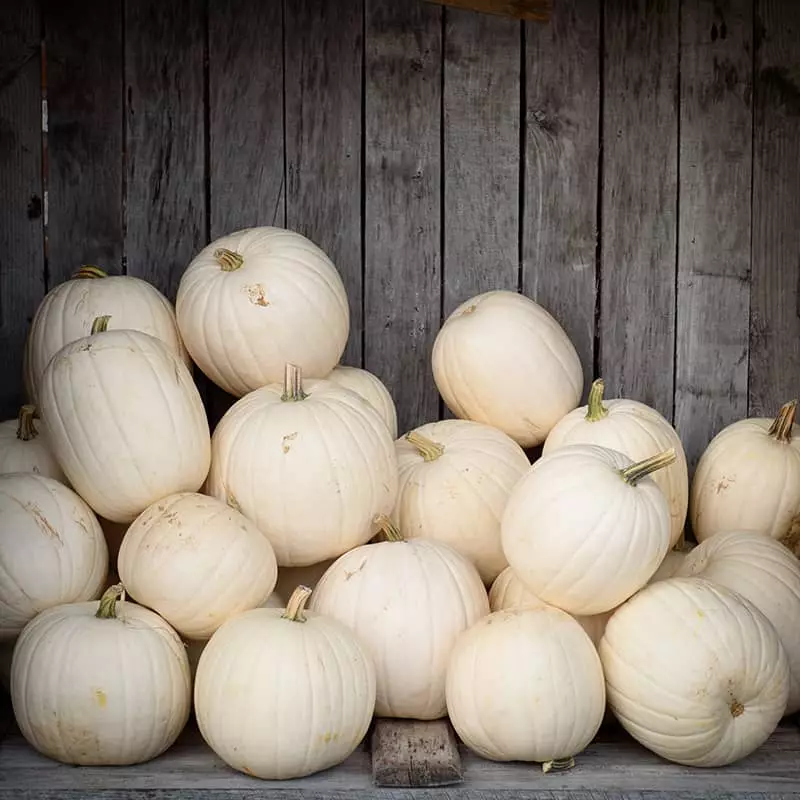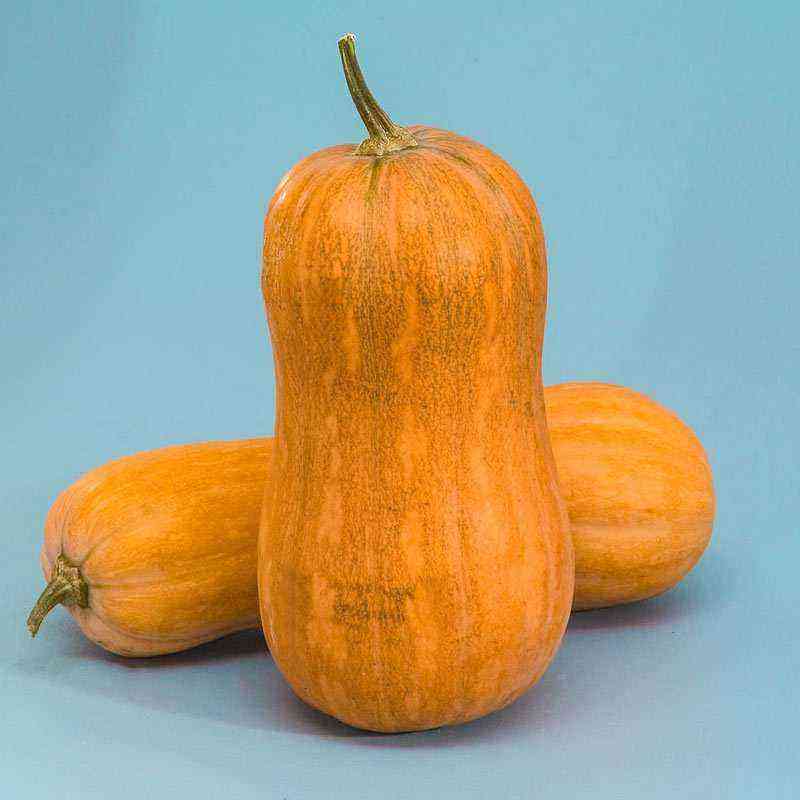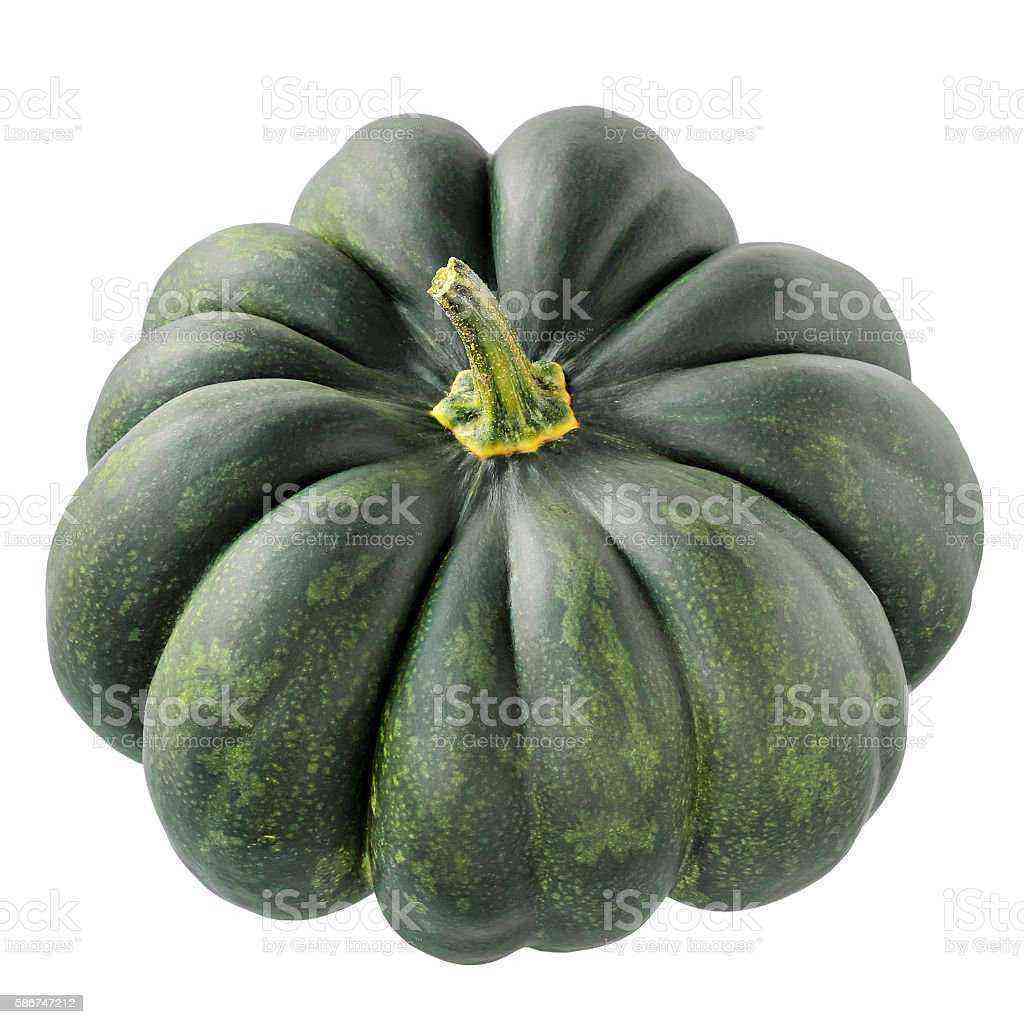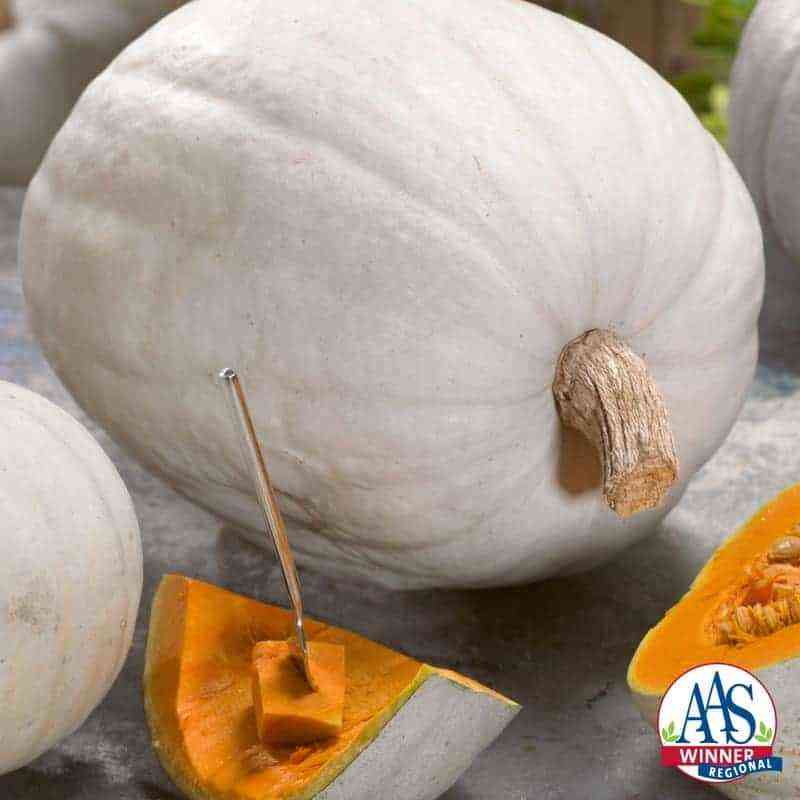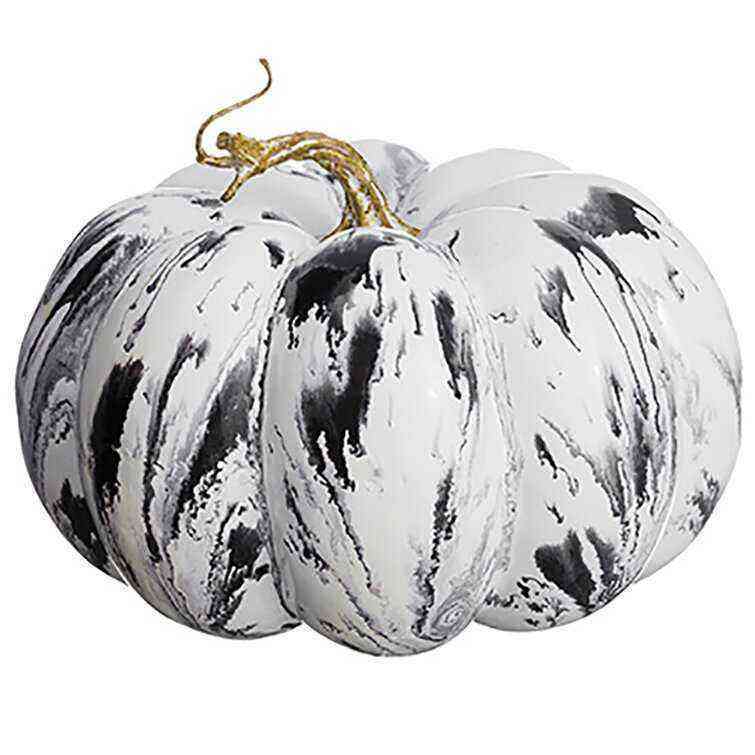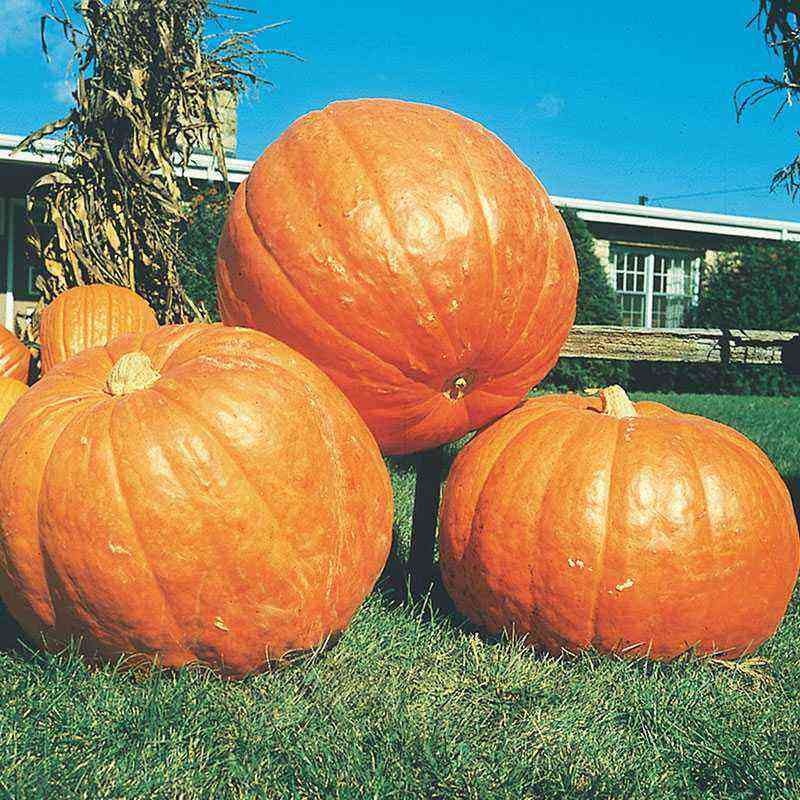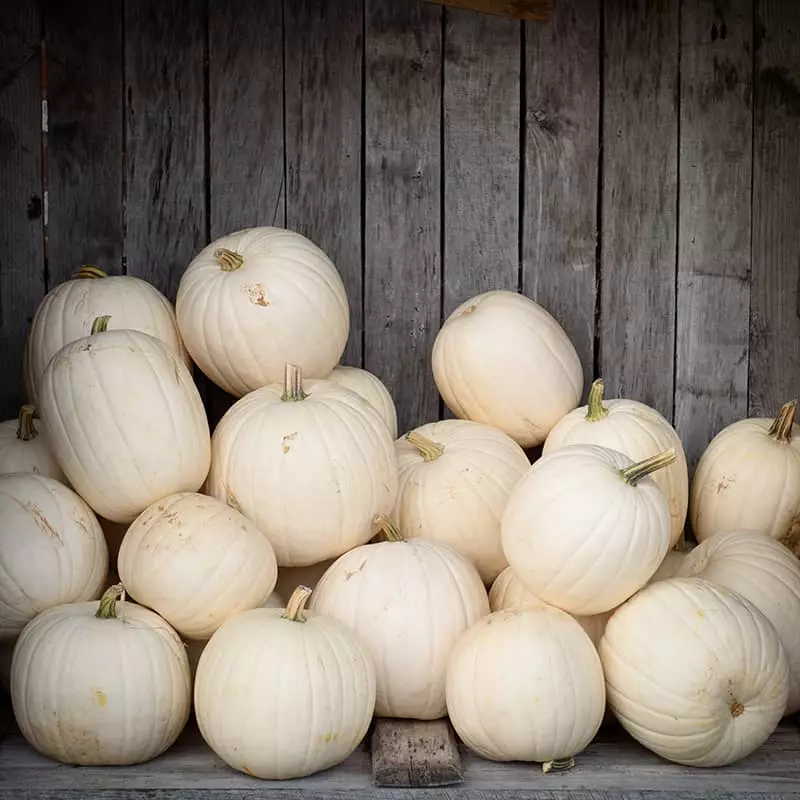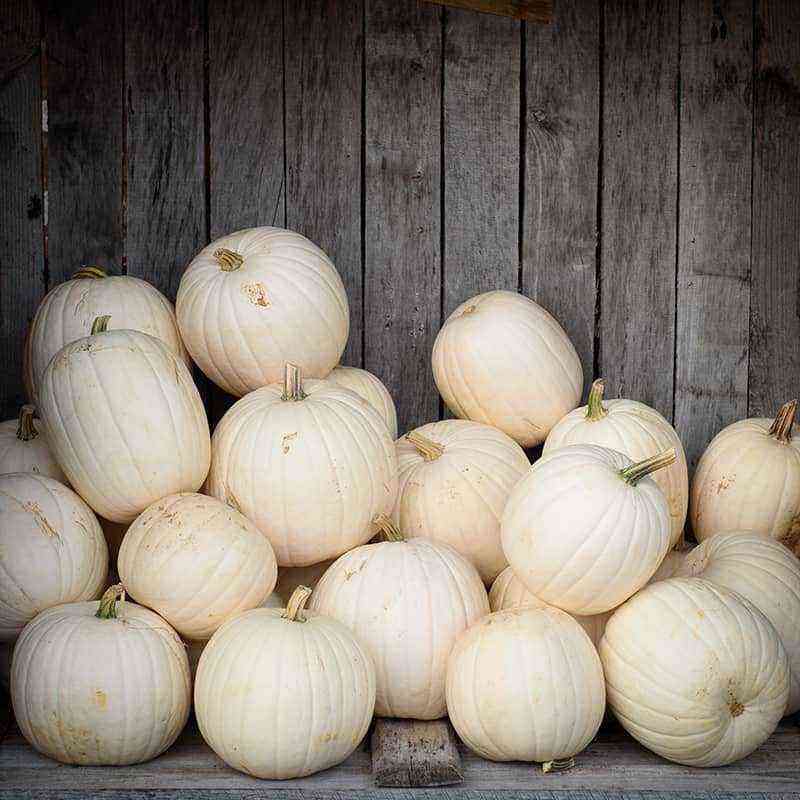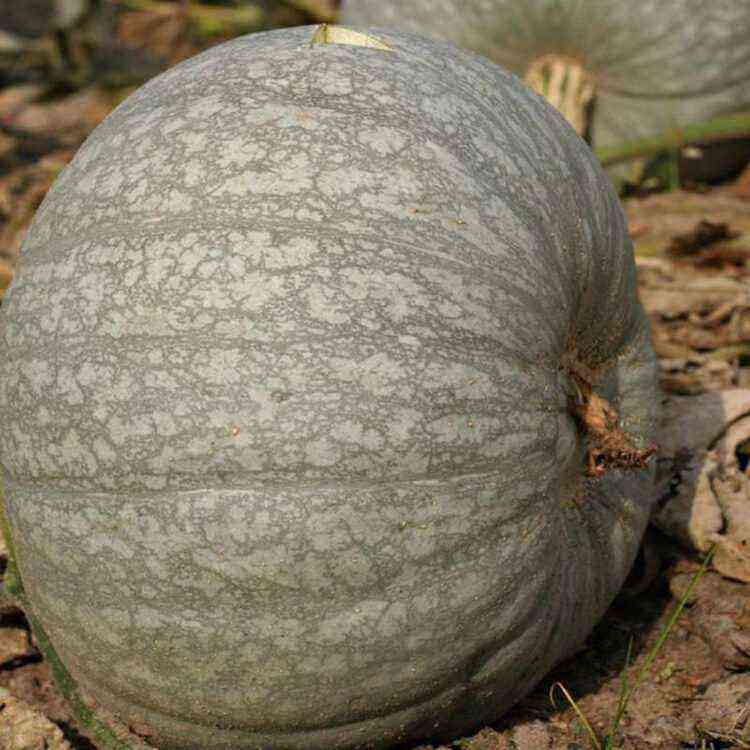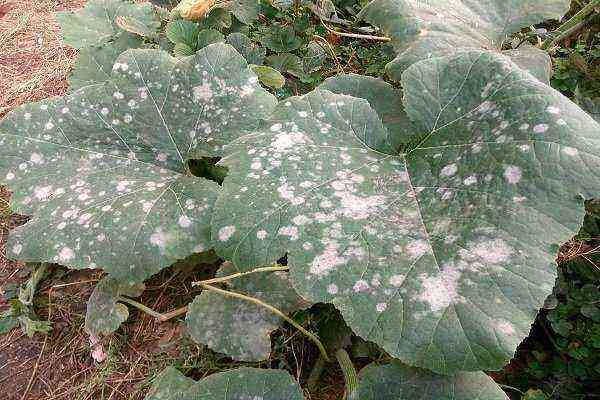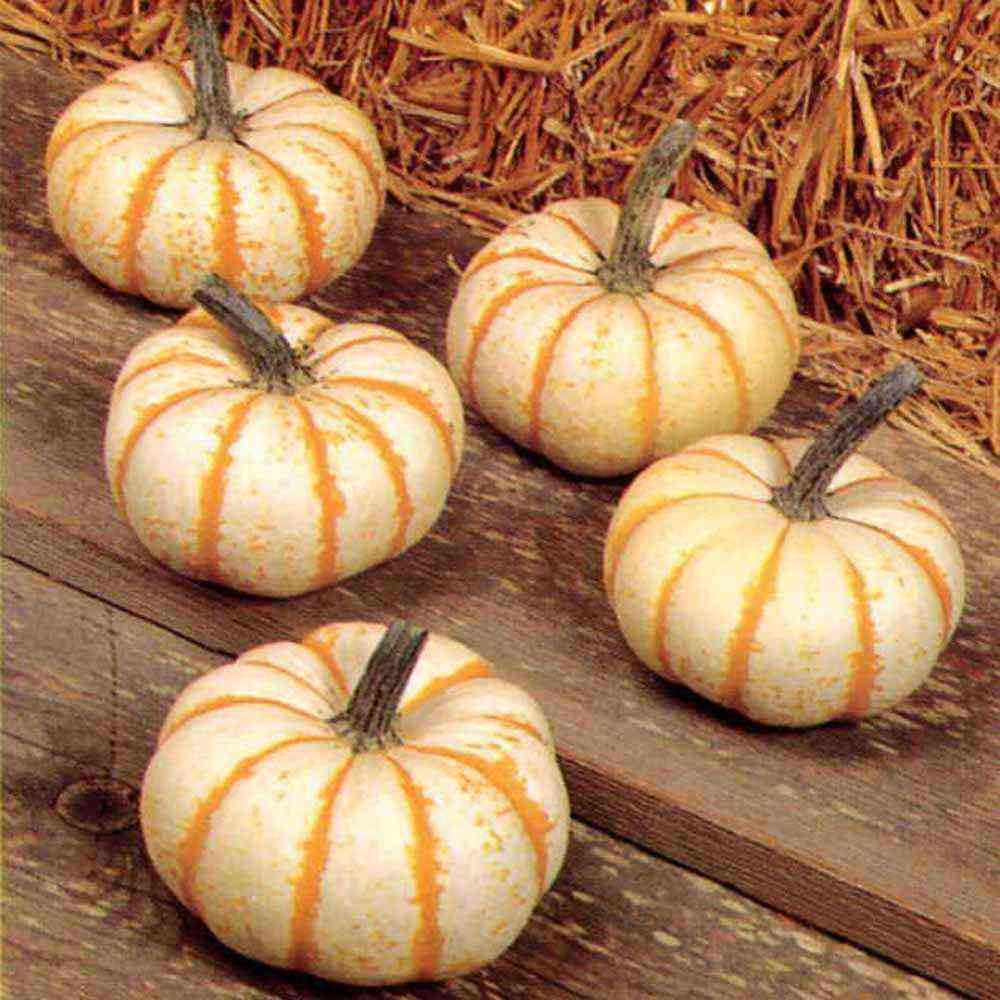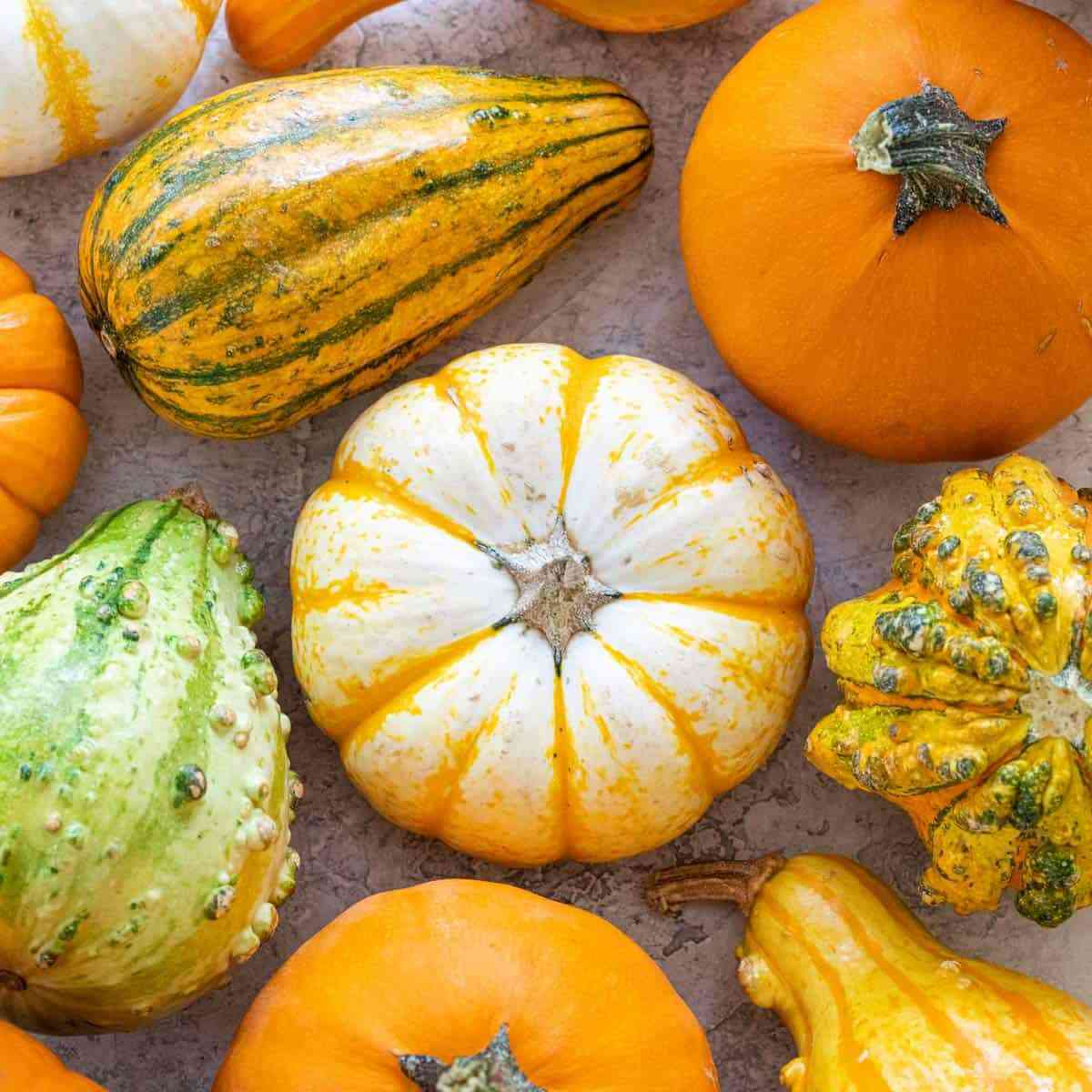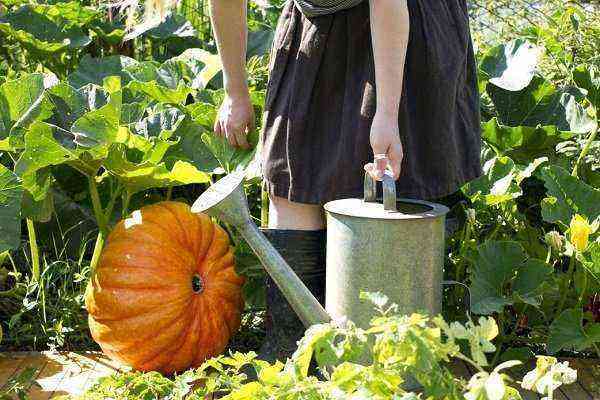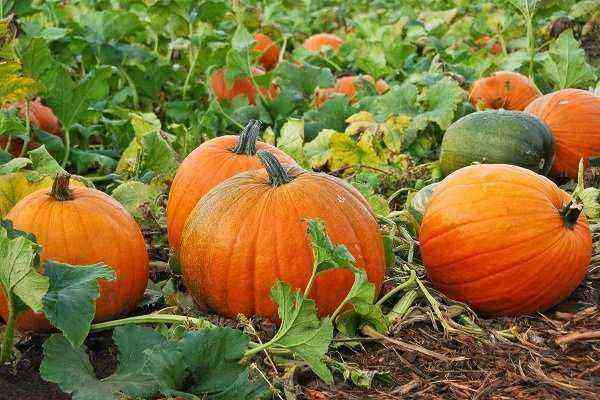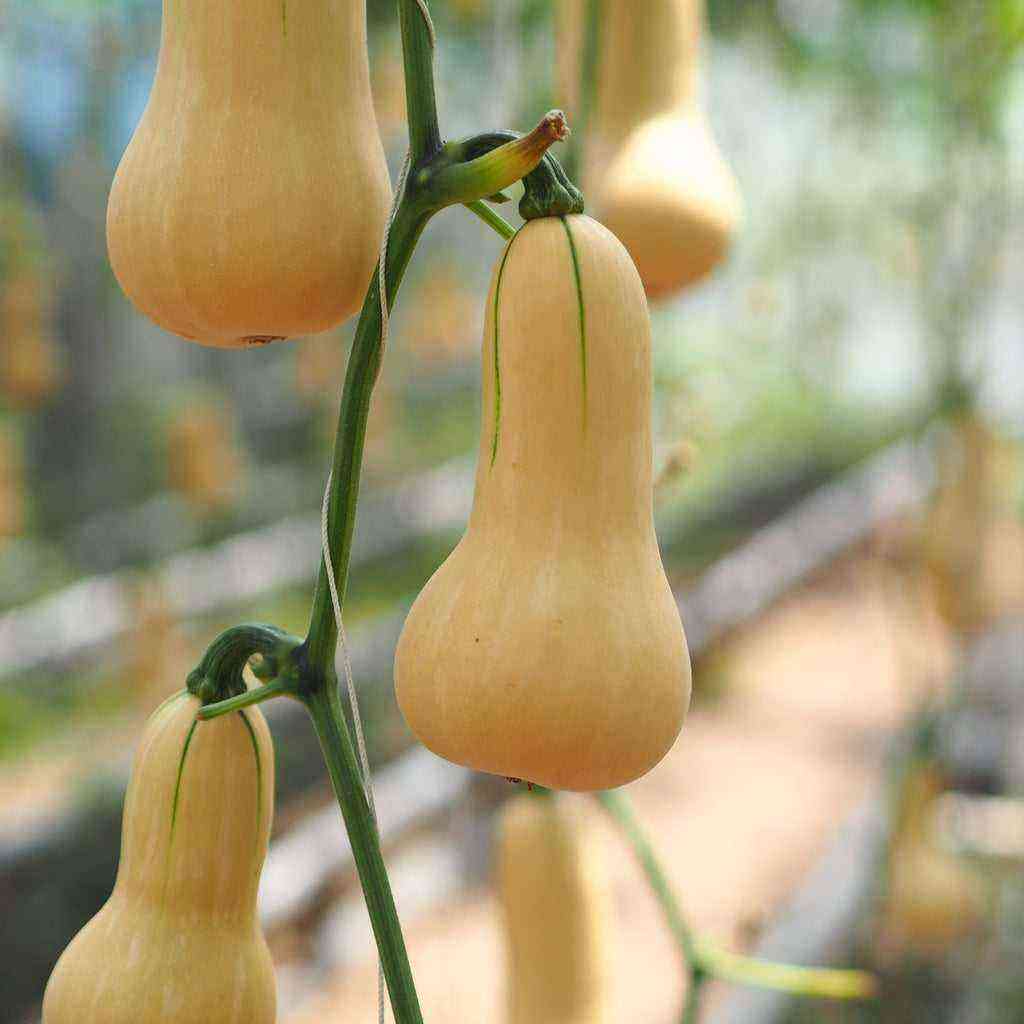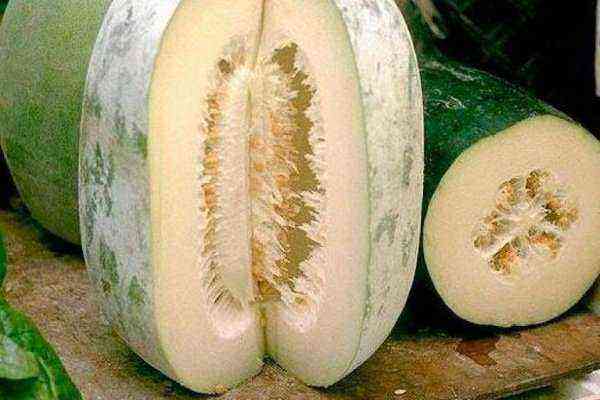You need to harvest pumpkins at exactly the right time. Only at this time, the fruits contain a large amount of valuable vitamins and minerals. But the mistakes of the gardener can lead to a decrease in the benefits of pumpkin. So, if the fruits are kept in the garden for too long, they may freeze slightly. The taste and shelf life also depend on the right harvest time.
When to harvest pumpkin?
It takes about 4 months to fully ripen mid-ripening pumpkin varieties. Harvesting is carried out closer to mid-September or in the second half of the month.
Early-ripening vegetables are removed about a month earlier. Representatives of the late ripening period, respectively, 30 days later.
Fruit picking is carried out strictly on a dry day. If the harvest falls on a rainy period, the plucked pumpkin should be left in a dark, dry room for several days. This time is enough for the fruits to dry well.
It is important to clean before the onset of serious frosts. Otherwise, the fruit will freeze a lot and simply deteriorate. It is forbidden to lay it for long-term storage.
What affects the timing of pumpkin ripening?
All varieties of vegetables are divided into late-ripening, early-ripening and mid-ripening. Each has its own rate of reaching full maturity. Climatic conditions directly affect the fruiting of a plant:
- In the south, gourds are grown outdoors and harvesting can be done after all the leaves are dry. This is a sure sign of the ripeness of the fruit.
- In the north, pumpkins are harvested earlier. In such conditions, the fruits simply do not have time to ripen in the open air. They are cleaned ahead of time, and left in the room to “reach”.
Signs of a ripe pumpkin
It is important for gardeners to accurately and correctly determine the degree of maturity of the fruit, which is ready for consumption or storage. It is strictly forbidden to cut or pierce the pumpkin. In case of violation of the integrity of the fetus, it quickly begins to deteriorate.
External manifestations
There are many signs that the pumpkin is ripe. These include:
- Dry stalk (hard and hard to the touch). In the case when it is still green, you need to wait a bit, as it needs to ripen.
- The lashes and leaves of the plant are completely / partially yellowed and dried up.
- The fruit has acquired a rich color, taking into account a particular variety – gray-green, yellow or dark orange. There are varieties that are not covered by this rule. When fully ripe, the fruits remain gray or white.
- Dense and rather rigid stem. If you press on it, there should not be a dent.
- On ripe fruits, the shell has a well-defined pattern. But green-fruited varieties are an exception.
- The structure of the pulp is quite dense.
- The seeds have a hard rind, but gymnosperms are an exception.
Experienced gardeners check the degree of ripeness by sound. If tapping on the fruit, it will be sonorous, then the pumpkin is fully ripe.
By following these tips, you can easily determine the optimal cleaning time. These criteria are universal, and are suitable for different regions of vegetable cultivation.
Partially, you can focus on the dates indicated by the manufacturer on the packages with seeds. Sometimes it also describes the shade that a fully ripened pumpkin should acquire.
But you should not completely trust the instructions of the manufacturer. These are general recommendations. They take into account only the optimal growing conditions and harvesting rules.
Individual signs
It is not necessary to remove the fruits from the garden to check the degree of maturity. Given a particular variety, each plant exhibits certain characteristics that indicate that the pumpkin is ready for harvest.
It is enough to look closely at the bark of the fruit:
- bush varieties – there are clear stripes of a light yellow hue;
- large-fruited species – dense and rather dark mesh;
- nutmeg varieties – the peel becomes brown in color, light spots of a round shape appear.
Pumpkin varieties and ripening dates
There are a fairly large number of varieties of pumpkin. However, there are universal harvesting dates that you can rely on:
- Early varieties. Ripening occurs in about 3,5 months. Harvesting is carried out starting from the middle or end of August (depending on climatic conditions).
The fruits are very tender, the peel is thin. You can store them for no more than one month. Varieties with a short ripening period are grown most often in regions with a cold climate, since when the pumpkin freezes, it will not be stored for a long time.
- Mid-season. The average maturation period is 4 months. Fruit picking is carried out from the second half of September until the first frosts come.
- Late-ripening or hard-bodied. They have a hard skin, which ensures a long shelf life of the fruit. Vegetable harvesting begins towards the end of September.
It takes about 200 days for the fruit to fully ripen. Most ripening occurs during storage.
Terms of pumpkin harvesting depending on the region
Fruits can be sent for storage only when they are fully ripe. If done too soon, the pumpkin starts to rot. More accurate harvesting times depend on the specific region in which the crop is grown:
- Middle lane. The peculiarity of the region is mild climatic conditions. Here you can cultivate almost all varieties of pumpkin. Harvesting begins in late September or October. It all depends on the specific type of vegetable.
Gardeners often choose varieties with a short ripening period. Fruits at the end of summer can be eaten or used to prepare various preparations. - Ural and Siberia. In these regions, a rather harsh and cold climate prevails. That is why gardeners opt for pumpkin varieties with early and medium ripening. It is recommended to completely harvest the crop no later than September 20th.
- Southern regions. It has a predominantly stable warm climate. Pumpkin picking begins towards the end of October. Experienced gardeners even fully ripe fruits are left in the garden for several days. It is believed that this procedure helps to extend the shelf life.
- Moscow region. The region is characterized by the frequency of changing weather conditions. Full cleaning should be done before mid-September. Early ripe varieties can be plucked as early as the last days of August.
Pumpkins with a late ripening period, in most cases, simply do not have time to fully ripen in the garden. Experienced gardeners first grow seedlings, after which they transplant already well-grown and strengthened plants into the ground.

Ways to accelerate maturation
So that the fruits do not freeze in the garden, about three weeks before the expected change in weather, all flowers must be eliminated from the lashes. Pinching the tops of young shoots is also performed. In this case, the plant directs all its forces to the development of fruits that have already begun.
If the plant has a lot of small pumpkins, some or all must be removed. Thanks to this technique, large vegetables will have time to fully ripen. If even with a warm summer, the pumpkin does not have time to pour, you can grow it through seedlings. Seeds are planted in pots in April.
The ripening of fruits is significantly accelerated by growing crops on a compost heap. This provides the crop with sufficient nutrients and additional heat.
It is not recommended to leave ovaries on the plant formed in early autumn.
Pumpkin harvesting rules
The main aspect is that the vegetable is cut strictly with the stem. It is forbidden to twist the fruit or pull out the plant.
Experienced gardeners have developed their own collection rules that contribute to longer storage:
- Trim the vegetable so that the length of the stalk is about 5-6 cm, but not less.
- Cut the fruit with a clean and sharp pruner (you can use a simple knife). Be sure to pre-treat the tool with disinfectants so that pathogenic microorganisms do not get into the cut, as they can provoke the onset of rotting of the crop.
- If you need to move a vegetable, always hold on to the fruit itself, and not to the stalk, as it can be damaged or completely torn off, which should not be allowed. The deficiency will adversely affect the keeping quality of the fetus.
- If the tops of the pumpkin are very stretched, before cutting the vegetable, first lift it a little. You need to reduce tension.
- Fully ripe pumpkins of late winter varieties, which are planned to be laid for long-term storage, leave them in the sun for 8-10 days beforehand. It is important that the fruits dry well in the fresh air. Then the bark becomes harder, and the pulp is much better preserved.
- If scratches appear on the fruit during harvesting, cover them with green paint. Defects will heal quickly, and the vegetable will not deteriorate. But eat these foods first.
Cleaning pumpkins is carried out as carefully as possible. If the stalk comes off the vegetable, you can not count on long-term storage.
Preparing Pumpkins for Storage
Before storing vegetables for long-term storage, you need to properly prepare them. It is enough to carry out a few simple but important procedures:
- gently clean the remains of dirt or soil with a clean, soft and dry cloth (wet material must not be used);
- sort through all the collected fruits – send for storage only dense and beautiful specimens that do not have flaws;
- if the fruits have dark spots, dents, scratches, and even small cracks, eat them first.
Periodically, it is required to ventilate the store and sort out the pumpkins. If this procedure is neglected, just one vegetable that has begun to deteriorate can infect the rest.
Useful Tips
Growing such a tasty and healthy crop as a pumpkin has some tricks, given which you can get an excellent harvest. It is worth listening to the following advice from experienced gardeners:
- the last watering is carried out no later than three weeks before the expected harvest date;
- in extremely rare cases, the degree of ripeness is checked by pressing the bark of a vegetable with a fingernail – if it is pressed through and it is green inside, the fruit is not ripe (however, this method is often impossible to use, as there is a risk of decay);
- if a lot of vegetables are ripe, but there is not enough storage space, you can peel the pumpkin, cut the pulp into slices, put it in bags and send it to the freezer;
- it is not recommended to try to save the pumpkin until spring, as the fruits are stale, and the pulp becomes “cotton”, loses its juiciness and taste;
- if the summer turned out to be rainy and cold, but the fruits were not yet ripe by the time of harvesting, the process can be accelerated – three weeks before harvesting, remove small pumpkins from the bush, pinch the tops on young shoots, remove all flowers.
Pumpkin is an unpretentious and easy-to-grow crop that grows in almost every garden. However, it is important to take into account the main nuances of not only caring for the plant, but also the timing of harvesting. It is necessary to know exactly how to determine the degree of ripeness of the fetus, and to carry out the removal in a timely manner, preventing the vegetable from freezing.
